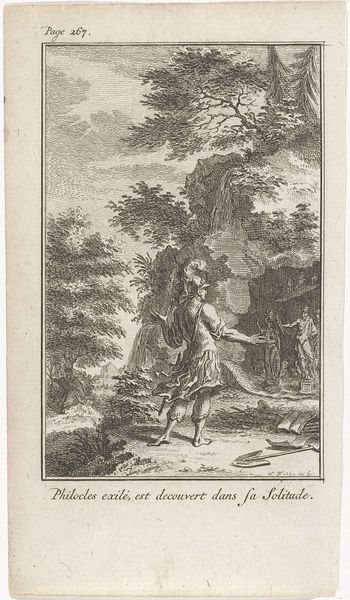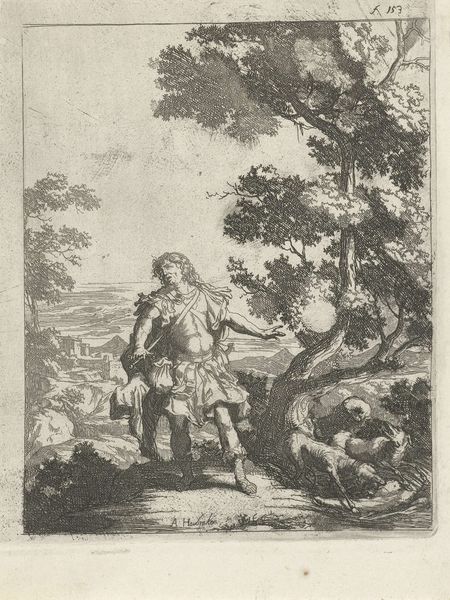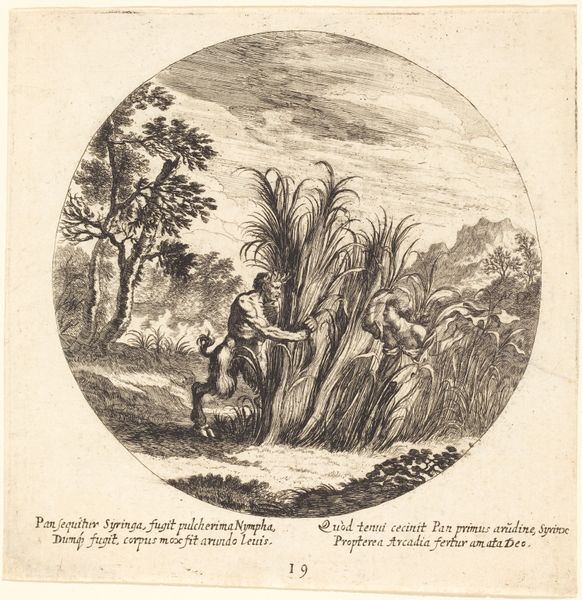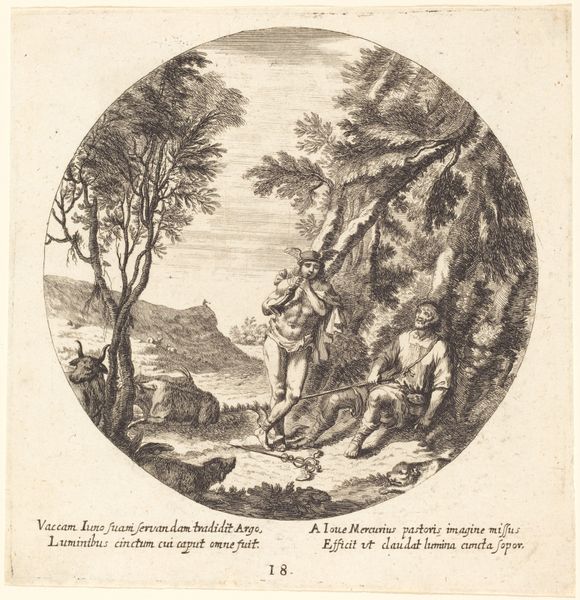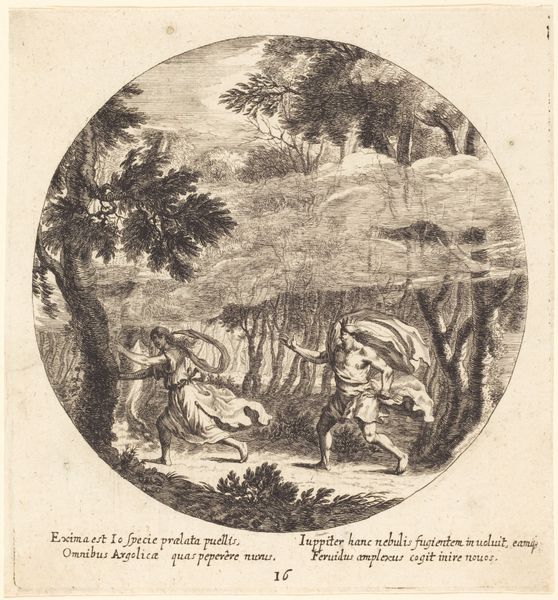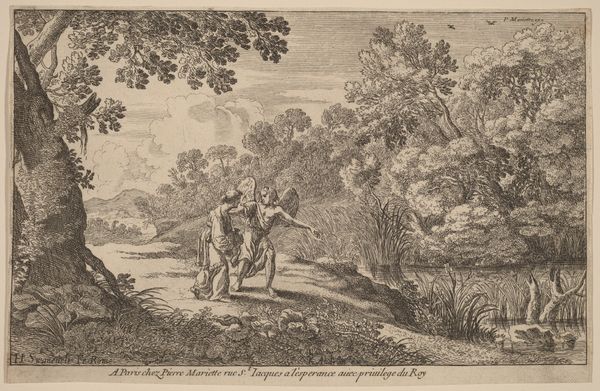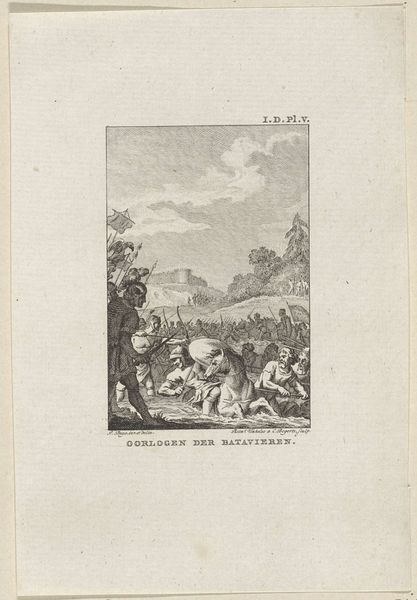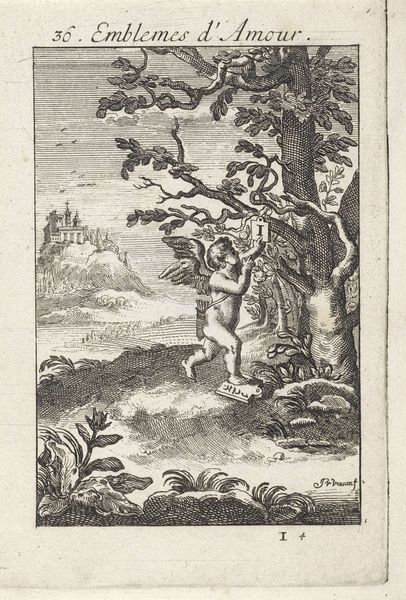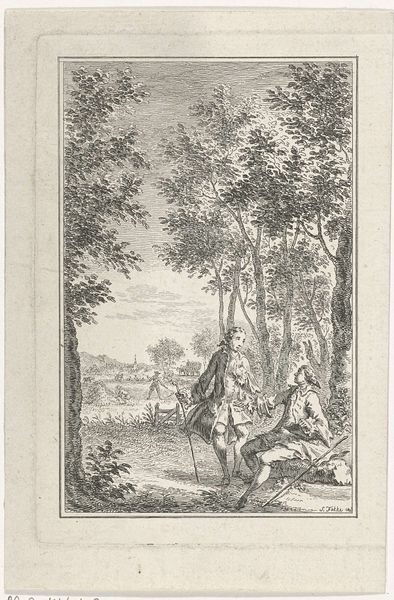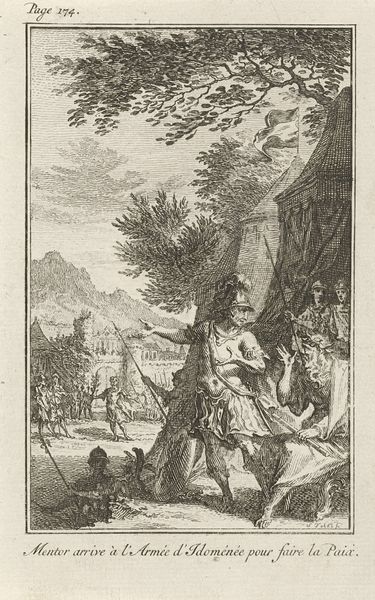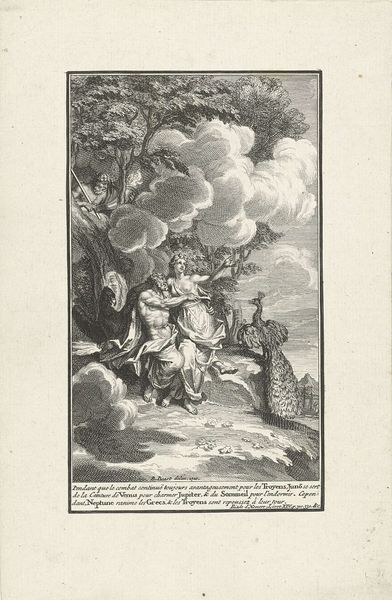
#
pencil drawn
#
tree
#
light pencil work
#
pencil sketch
#
dog
#
old engraving style
#
sketch book
#
personal sketchbook
#
pen-ink sketch
#
sketchbook drawing
#
pencil work
#
sketchbook art
Dimensions: height 214 mm, width 126 mm
Copyright: Rijks Museum: Open Domain
Curator: This delicate print, "Tircis en Amarante," created around 1772 by Reinier Vinkeles, is currently held in the Rijksmuseum's collection. The piece gives us insight into the world of 18th-century illustration. Editor: It's beautiful. There’s an immediate sense of pastoral tranquility, but almost melancholic with the muted shades of light and shadow. The central figures are under the full tree, giving protection and shelter. Curator: Indeed. Vinkeles worked during a period where Neoclassicism began to temper the Rococo style. The imagery reflects the societal trend to retreat to nature idealized in the period’s literature. Note the formal, almost staged arrangement, despite the rustic setting. Editor: I find that tension fascinating. It’s performing an idea of rustic life. The central figures appear stiff despite leaning casually by the tree and the alert dog enhances that sense of curated leisure. Who were Tircis and Amarante? Curator: These figures were typical characters found in pastoral poems and plays of the time, embodying idealized shepherds and shepherdesses, removed from the harsh realities of rural existence. This was commissioned to accompany Fable CLV, addressed "pour Mlle. de Sillery." This likely accompanied an aristocratic telling of a classical myth. Editor: That makes it clearer: an elite fantasy about rural simplicity and innocence. This is art for a very select audience—a mirror reflecting a desired identity more than anything else. It begs the question of the role this played for those outside the frame; whose labor was used to support this sort of retreat? Curator: An important perspective. It reminds us that images such as these often reinforce the social hierarchy. Looking closely, one can see how even the landscape seems manicured. It presents a version of nature compliant with the period’s aesthetic preferences. Editor: So this isn’t just an escape. It’s a controlled and carefully constructed one. I appreciate how analyzing images like “Tircis en Amarante” can lead us to consider broader ideas of access, power, and who gets to define what is beautiful. Curator: Agreed. Art becomes truly engaging when it serves as a starting point to dissect these complex relationships, adding greater richness and relevance for contemporary viewers.
Comments
No comments
Be the first to comment and join the conversation on the ultimate creative platform.
